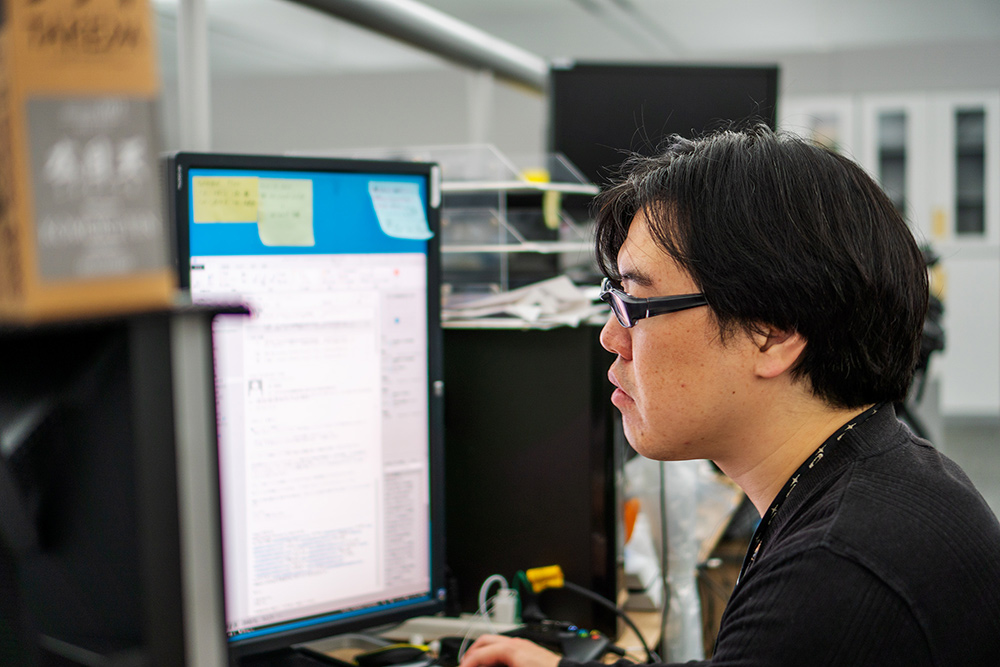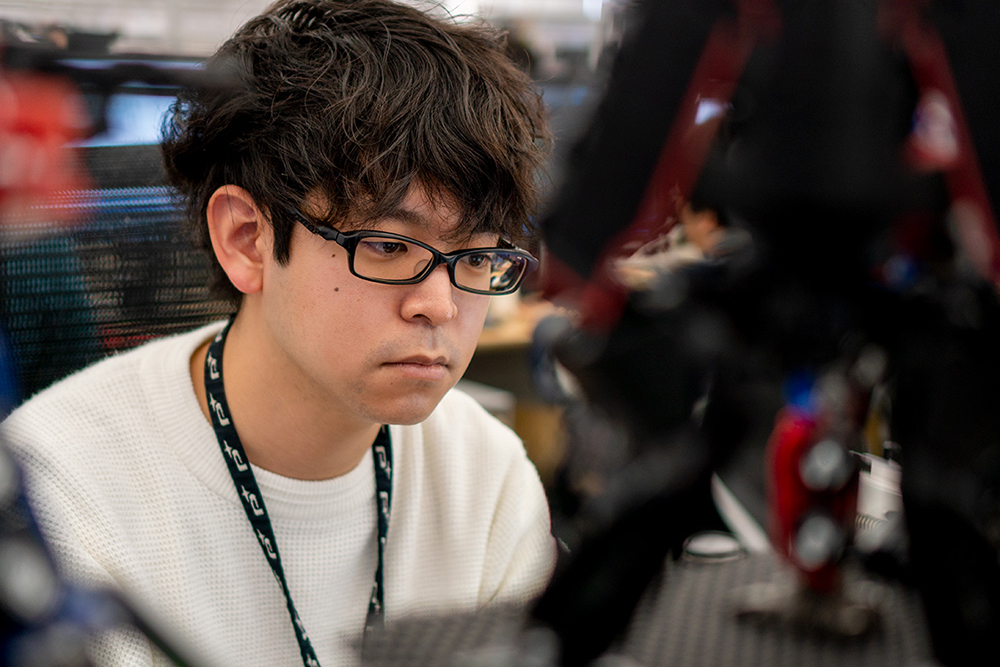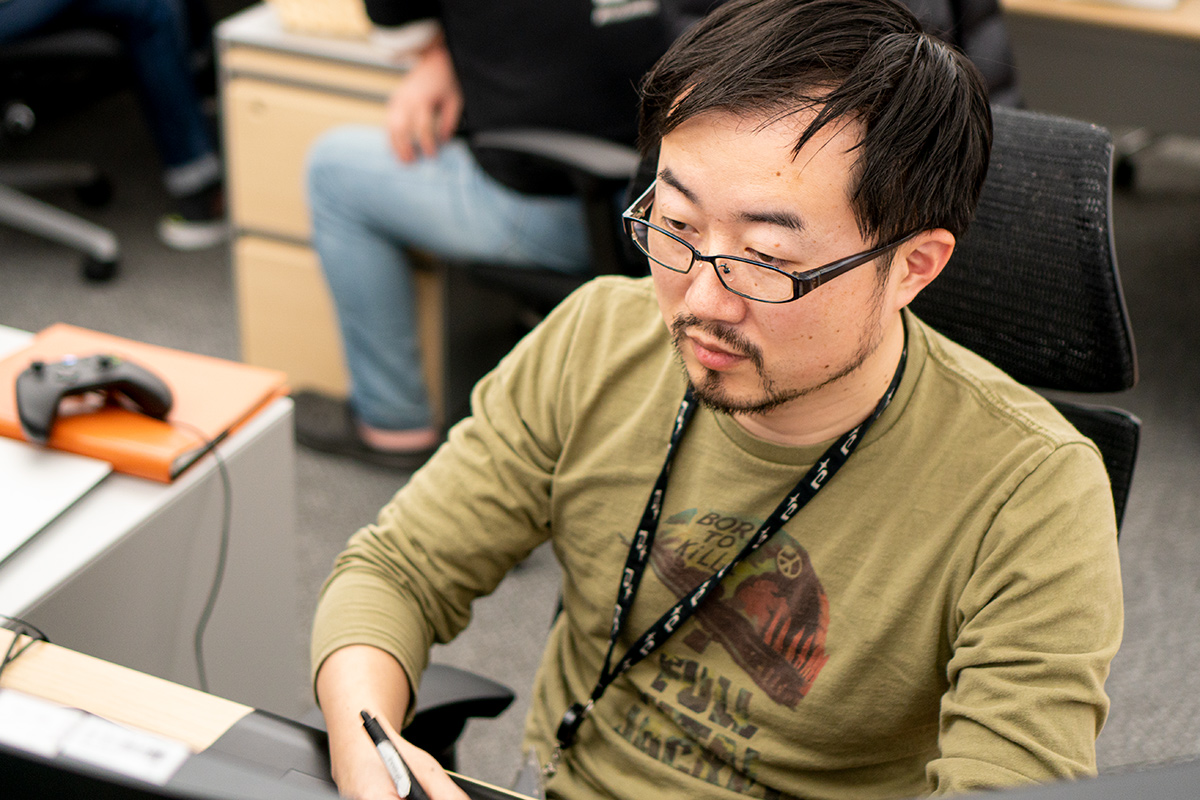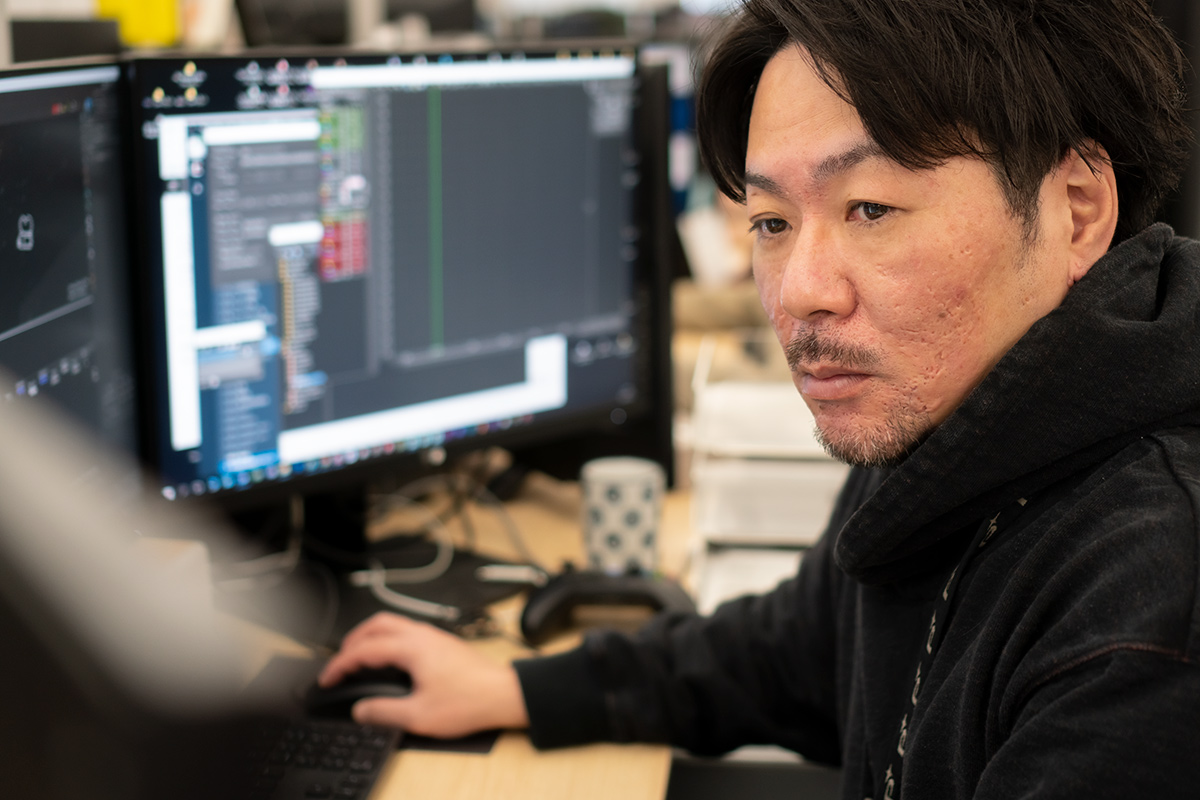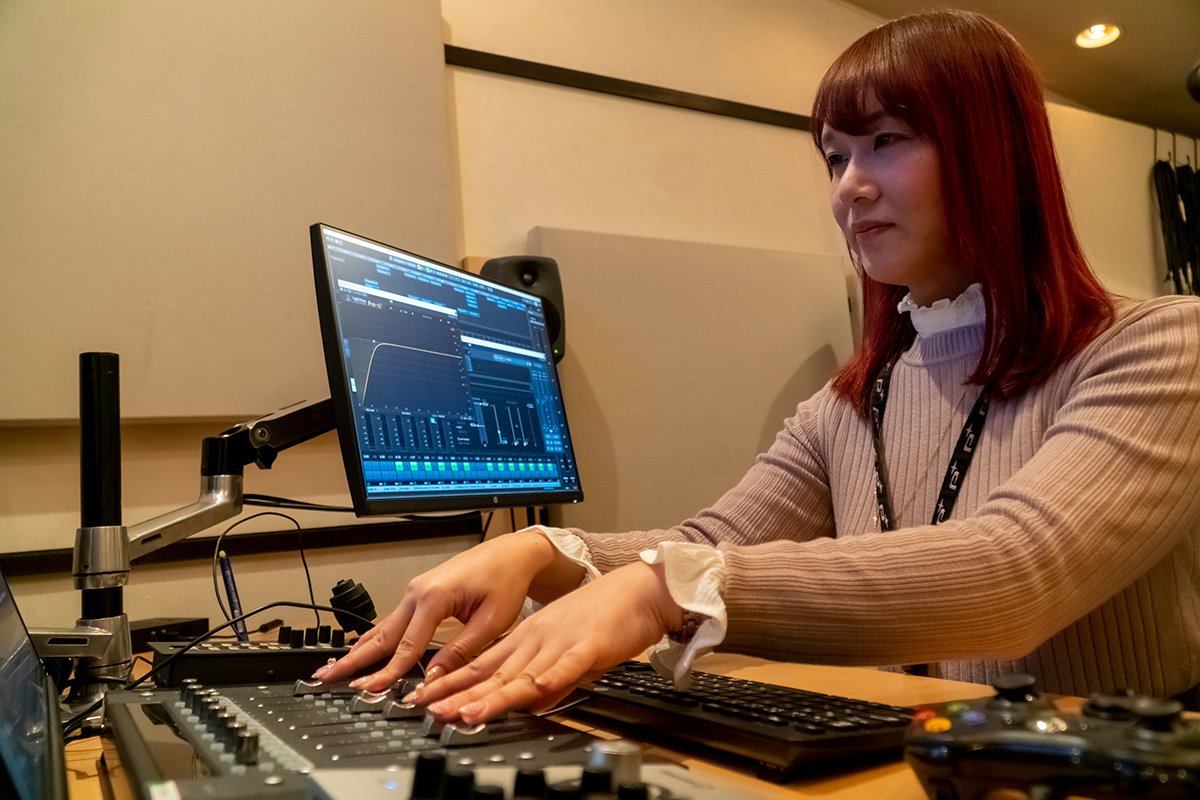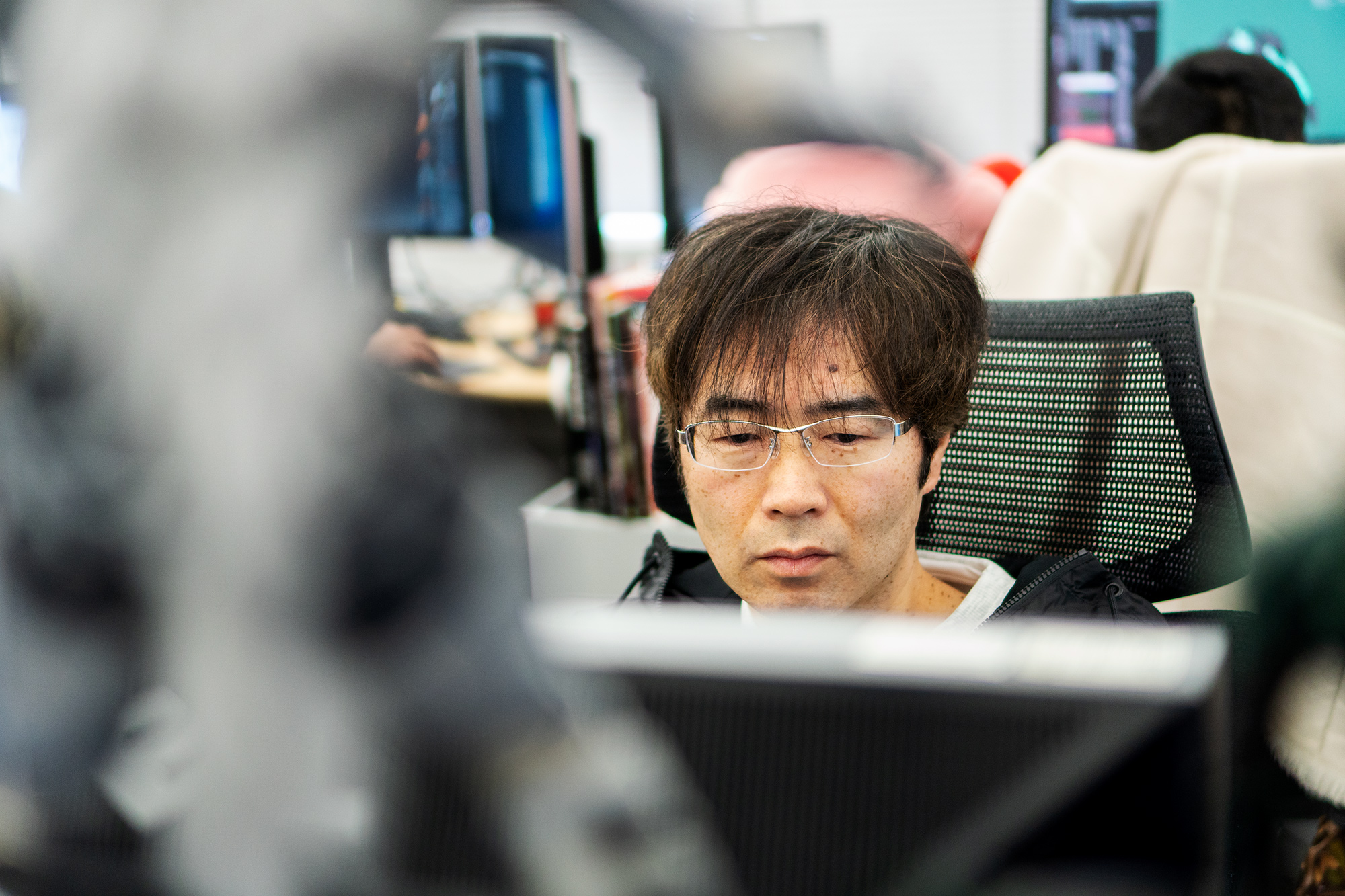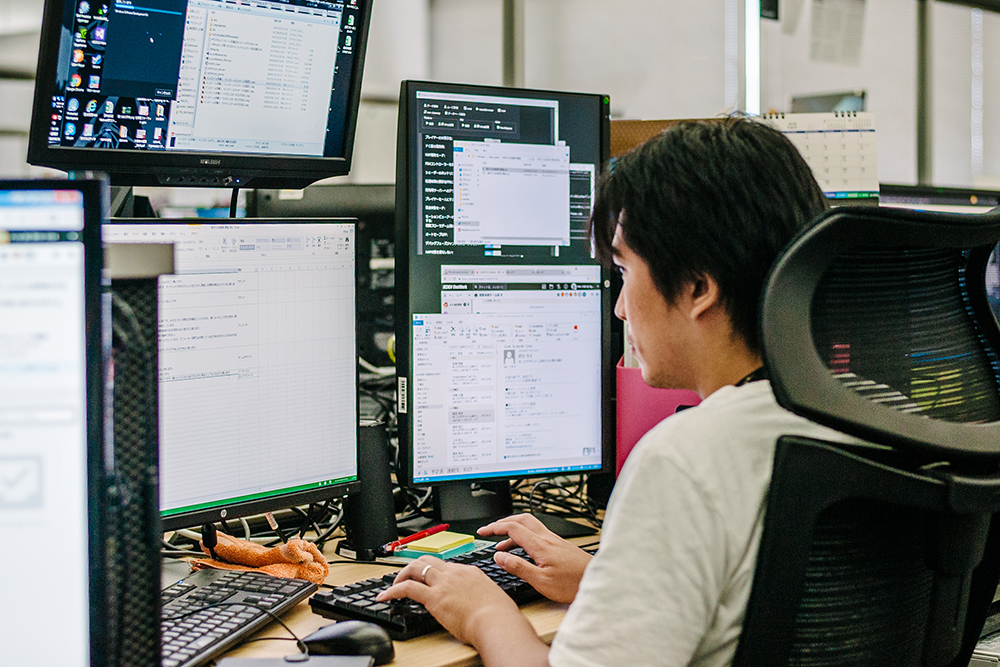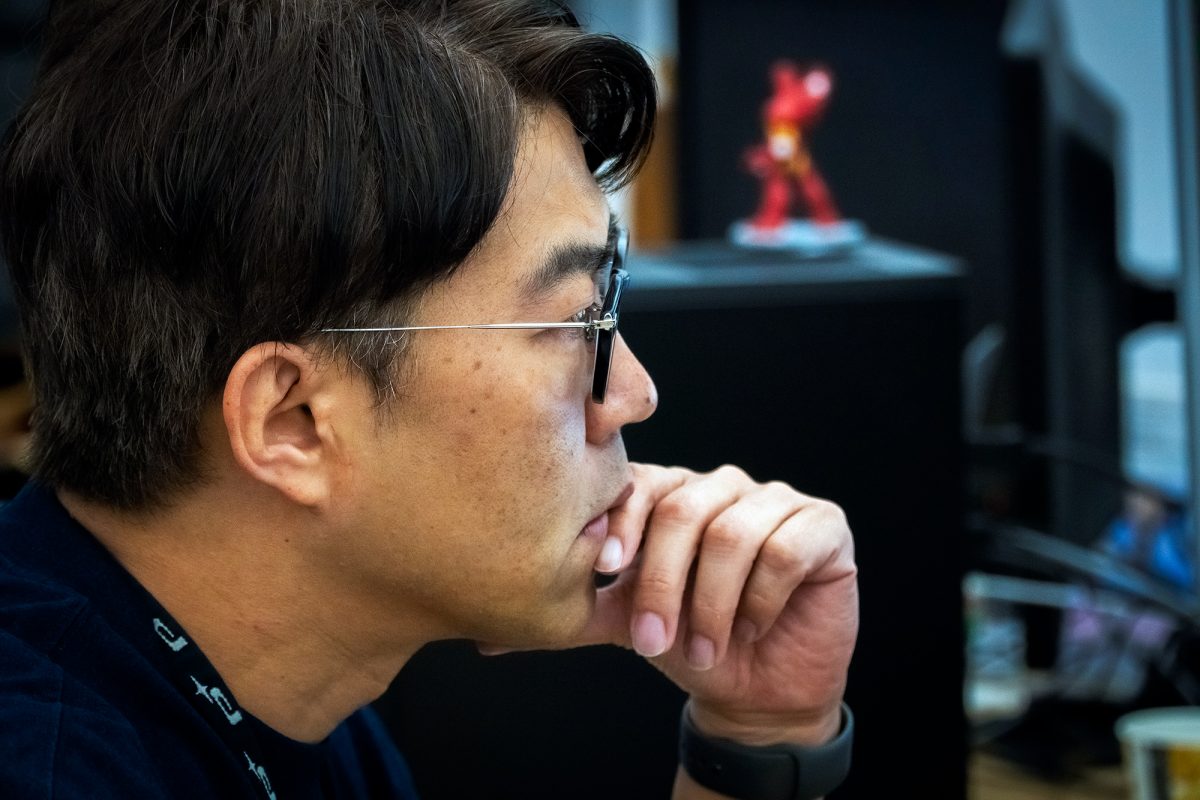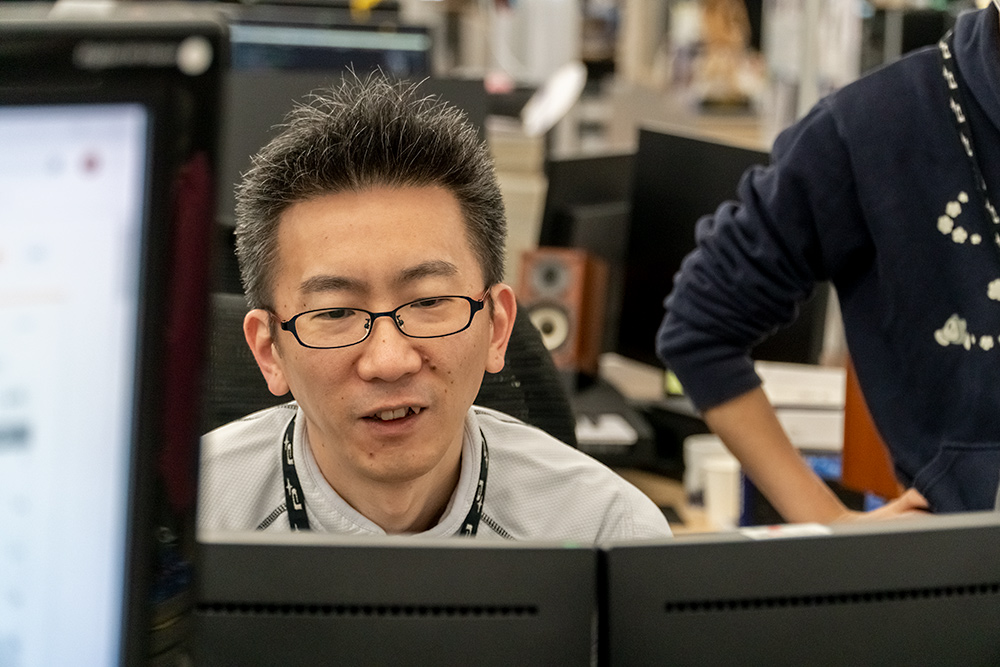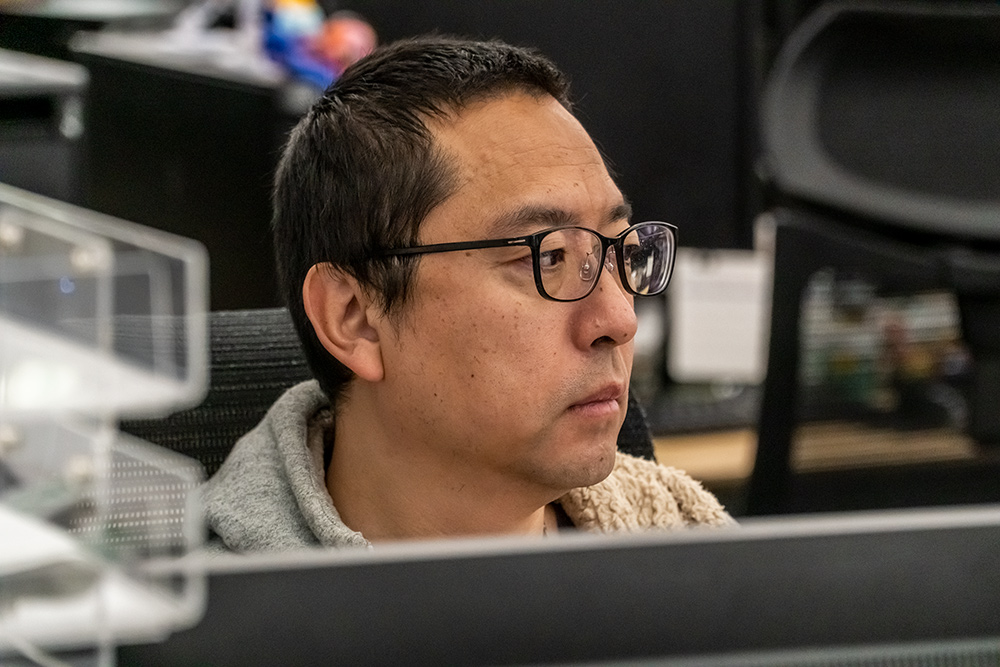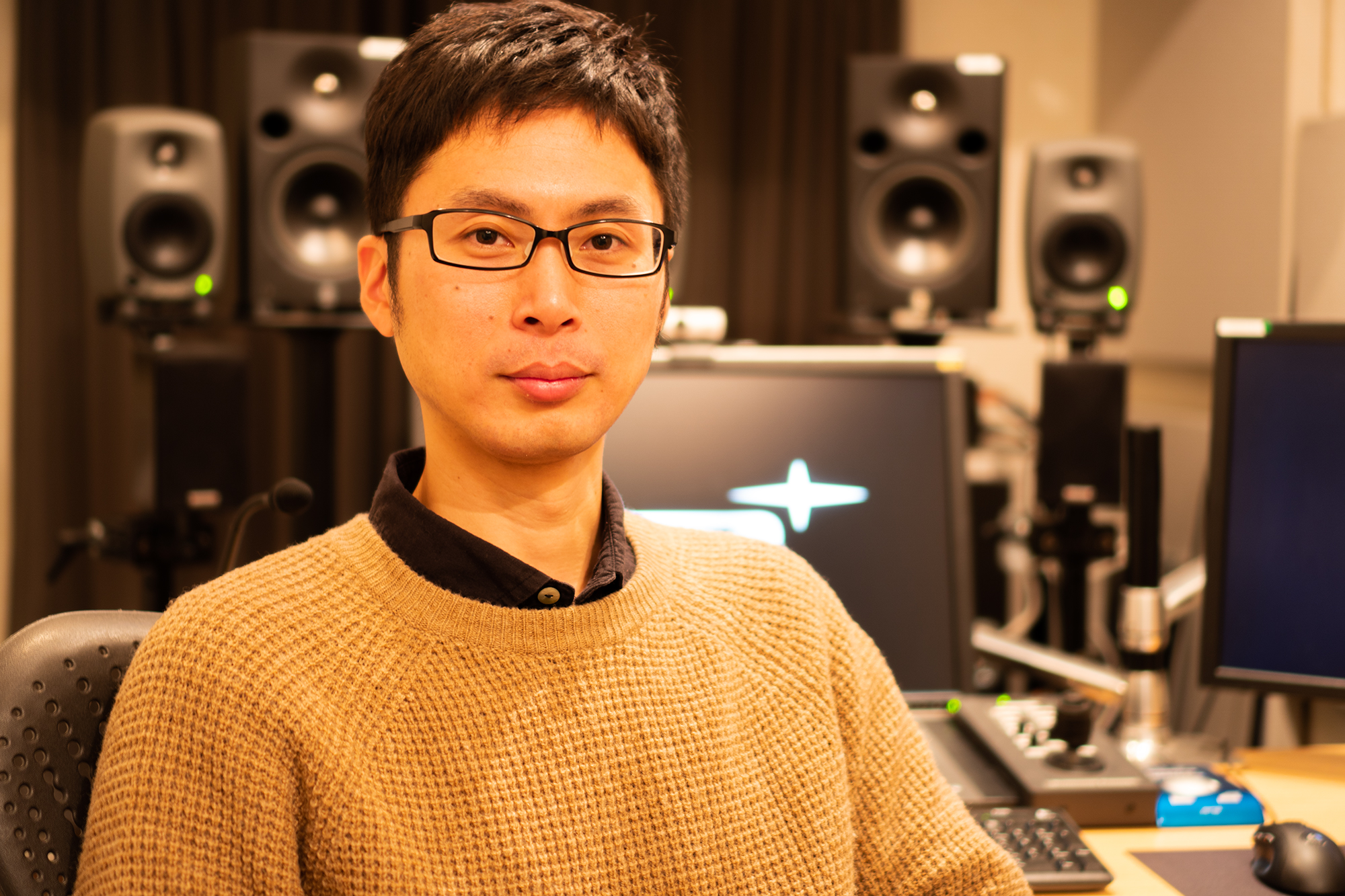Surprising Even Ourselves
Yasutaka Maeki
Senior Environment Artist and Environment Team Lead, Osaka Studio, Game Creative Division
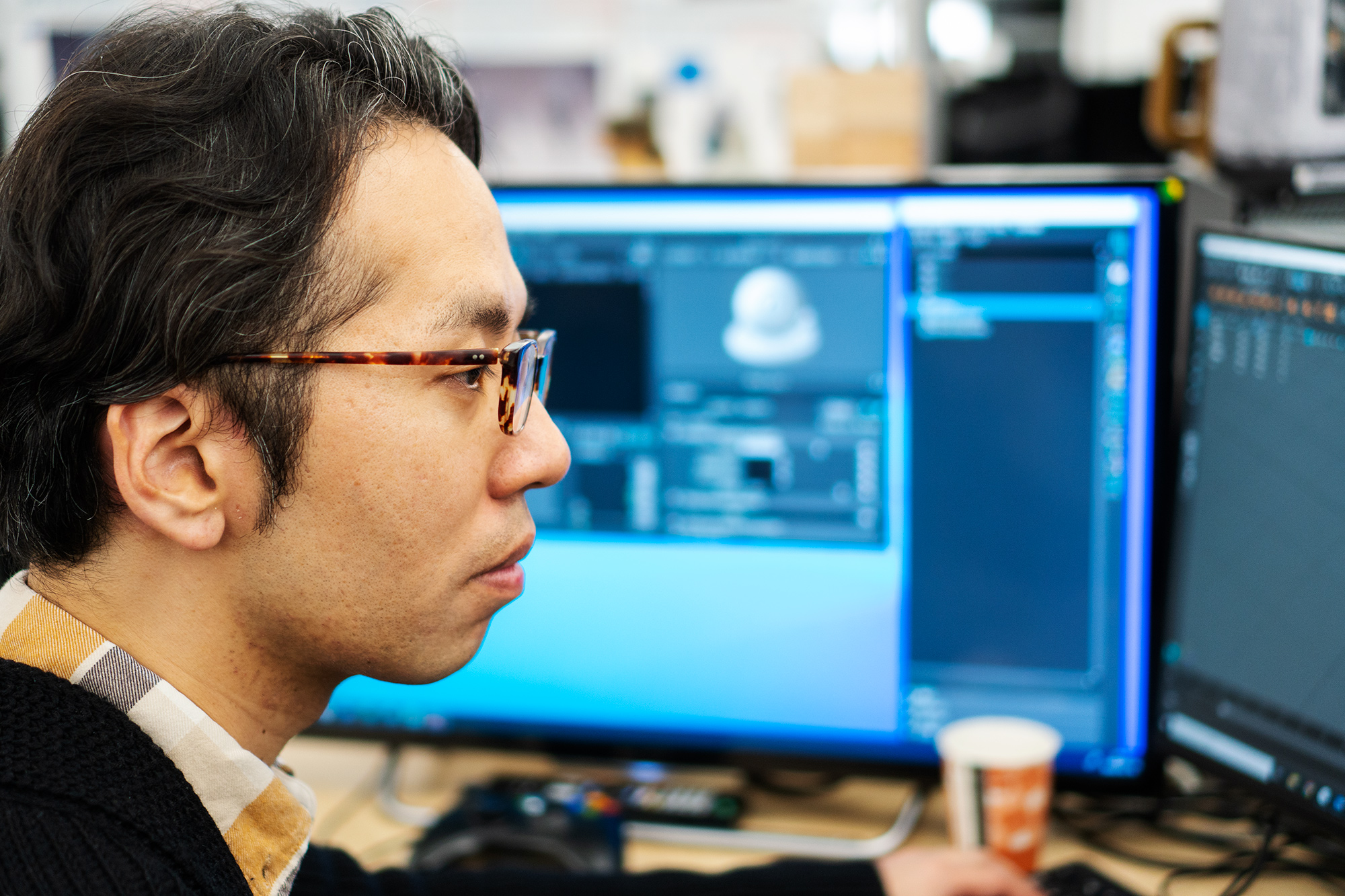
From an Offhand Remark to Your Screen
At the start of my career in games, I helped out with the development of a few well-known titles as a temp worker. But in that position, I didn’t get to be as deeply involved with the games as I’d have liked. Besides, what I really wanted to work on was brand-new, original games. And so I looked for other work. When my search led me to PlatinumGames, I knew it was the place for me.
Most of my experience up until then was as a character modeler. But at Platinum, I found myself working as an environment artist on Bayonetta. It was rough going at first! The environment artists worked closely with the game designers on creating levels, though, which meant I’d gotten my wish: I was “deeply involved” with Bayonetta, for sure.
One of the most fun parts of making the levels for Bayonetta was thinking through them as if they were actual locations:
“Oh, a place like this would have a sacred feeling to it. Let’s send some rays of light through the cracks in the rock here.”
“This spot is a ways away from the center of town, it should feel a little calmer.”
“If this is where the destruction starts, the footing should be more precarious.”
“Hey, what if the emergency brake suddenly stopped this elevator?”
Offhand comments like these led to ideas for gimmicks for the player to encounter in the levels, and it was really satisfying when some of them got implemented! What starts as just shooting the breeze with your coworkers can end up in the game. It happens more often than you’d think at PlatinumGames, and it’s part of what makes it so interesting to work here.
One Hundred Characters, Sixty Frames per Second
The Wonderful 101 was my first title as a lead artist, and to call it a “challenge” would be an understatement. It looked unlike any game I’d worked on before. There was an awful lot to wrangle with: How do we get a hundred characters or more on-screen and keep them moving at sixty frames per second? How can we pack the game with enough colorful, unique locations to make it a rich experience? What’s the best way to make use of both of the Wii U’s screens? And I haven’t even mentioned lighting, or managing data load times, or camera angles and settings, or…
The first thing I did was research. It was critical to start with a strong grasp of how the engine handled data and how it rendered the visuals on-screen. I went around the company, asking after as much information as I could get. Everyone working on graphics for The Wonderful 101 had their work cut out of them, and no one team could afford to stay isolated. I held weekly meetings with character modelers, visual effects artists, environment artists and programmers, and through working together and a healthy dash of trial and error, we cleared our graphic goals one by one.
Nowadays, it’s obvious to me that relying on outsourcing is essential to creating enough content to keep a game satisfying. Early on, though, the environment team didn’t turn to outsourcing vendors very often. I told myself it was because it would be easier to maintain consistency and make any last-minute corrections if we did everything in-house. I really didn’t know much about outsourcing. But through regular discussion with our outsourcing managers, we worked out a consistent format for writing orders, as well as a smooth workflow for working with outside vendors. Then I worked with our concept artists to find out how to make our designs easier to adjust and correct. At last, we were ready to make full use of outsourcing for the project.
The result of all that cooperation, inside and outside PlatinumGames, was a richer, more colorful game experience. Even we were surprised by how much content we were able to cram into The Wonderful 101, and we’re the ones who made it! (You’ve played The Wonderful 101, so you know what I’m talking about, right?)
Good Ideas Get Heard
Nowadays, I have a leadership stake in pushing our games to completion, but I’m still mainly focused on the environment team. I get a lot of chances to provide guidance and assistance to artists; talking it out with them if they don’t quite grasp the project’s direction, for example, and helping redistribute their tasks if they’re feeling a bit overwhelmed. On top of that, I’m also the face of the environment team to the rest of the company, and provide related support even outside of the project I’m specifically focused on if necessary. Naturally, I don’t do it all on my own, but I’d like to think I’ve reached the point where people say with confidence, “If you need something environment-related, talk to Maeki.”
You can’t make a game without a lot of cooperation and communication between teams. This is especially true at PlatinumGames, where the spirit of innovation transcends job titles and seniority. No matter who you are here, good ideas get heard. I’m happy to keep working in a place where ideas overcome team divisions and everyone has a voice. Whether we’re talking about gameplay ideas, or how to make something look just right, fresh, unfettered ideas are great inspiration.
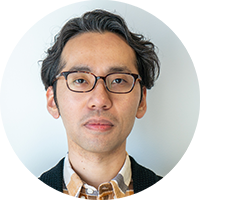 |
PROFILE
Yasutaka MaekiSenior Environment Artist and Environment Team Lead, Osaka Studio, Game Creative Division |
| Yasutaka Maeki started his career as temporary staff on major titles like The Legend of Zelda: Twilight Princess and Metal Gear Online. In search of an environment where he could be more deeply involved with development, he joined PlatinumGames in 2008. Since then, he’s worked as an environment artist on Bayonetta, Anarchy Reigns, The Wonderful 101, Bayonetta 2, Transformers: Devastation and Astral Chain. | |
